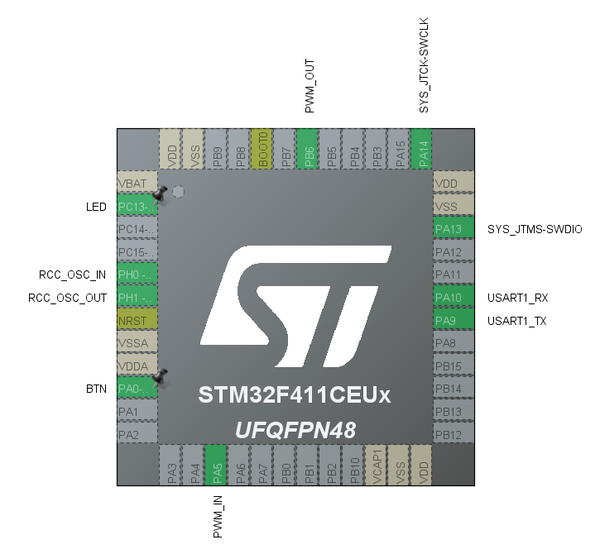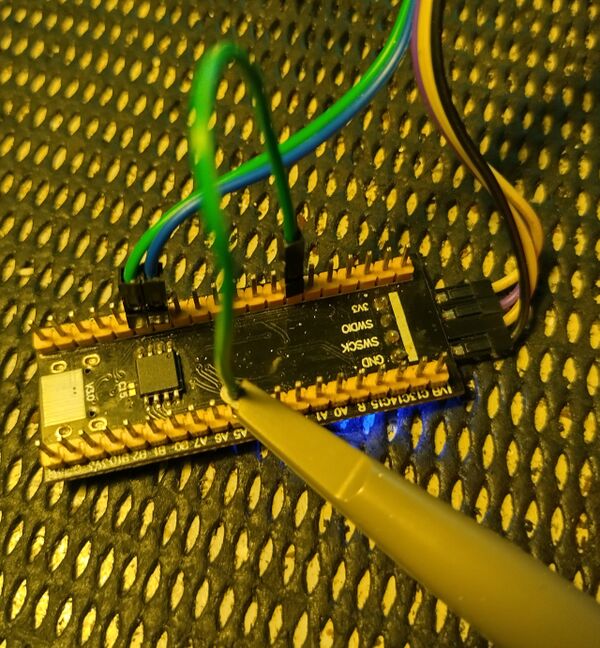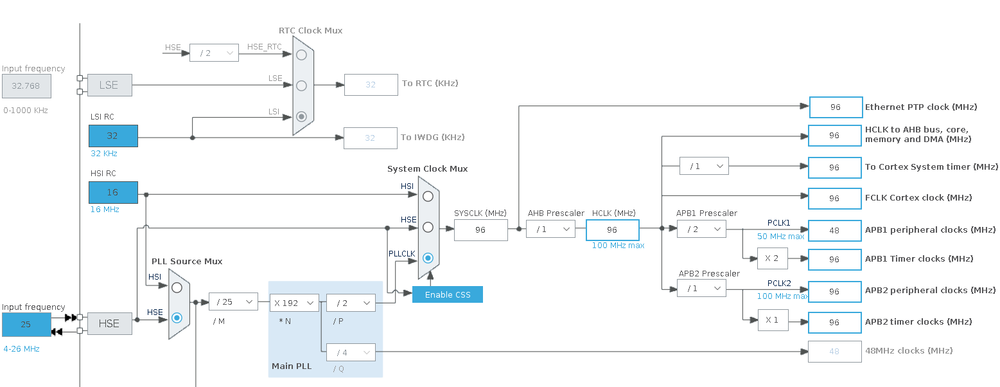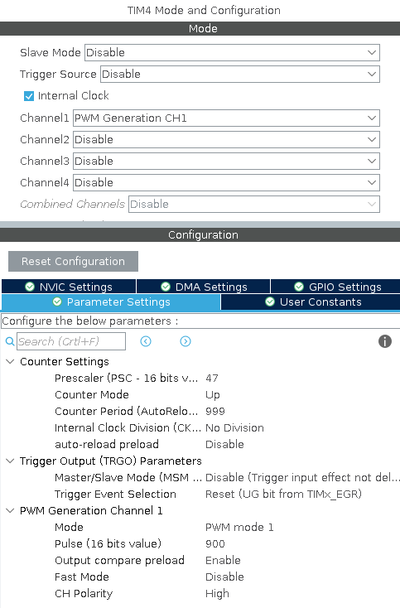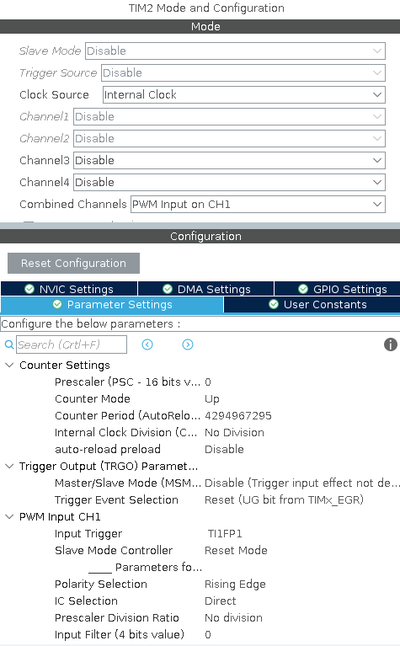Difference between revisions of "STM32 Timer PWM Input Capture"
(→Wiring) |
(→Wiring) |
||
| Line 15: | Line 15: | ||
[[File:PWM Input Capture example - wiring.jpg|600px]] | [[File:PWM Input Capture example - wiring.jpg|600px]] | ||
| + | |||
| + | In this photo, a [[ST-Link]] device with serial port, and an oscilloscope probe has also been connected. | ||
== STM32CubeMX Setup == | == STM32CubeMX Setup == | ||
Revision as of 04:07, 13 March 2022
The timers in STM32 MCUs are incredible powerful. We have used them before to generate PWM Signals and to decode signals from rotary encoders. In this example we will use them to determine frequency an duty cycle of an external PWM signal.
For the example we will be using a Black Pill development board and we will be using the same MCU to both generate and to decode the PWM signal.
The source of the complete example is here.
Wiring
Since we are using the same board to generate and to decode the PWM signal, we need a jumper wire to connect the PWM Output to the PWM Input. The pinout resulting from the setup in the next section looks like this:
So, we will need to run a jumper wire from PB6 (the PWM output pin) to PA5 (the PWM input capture pin) - like this:
In this photo, a ST-Link device with serial port, and an oscilloscope probe has also been connected.
STM32CubeMX Setup
Code
